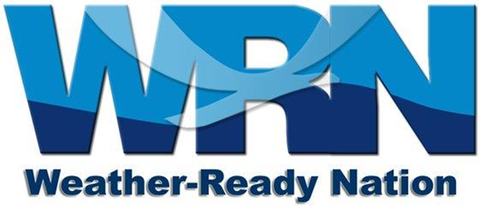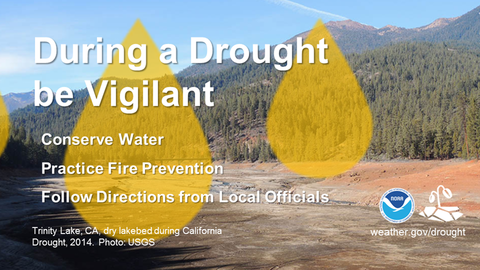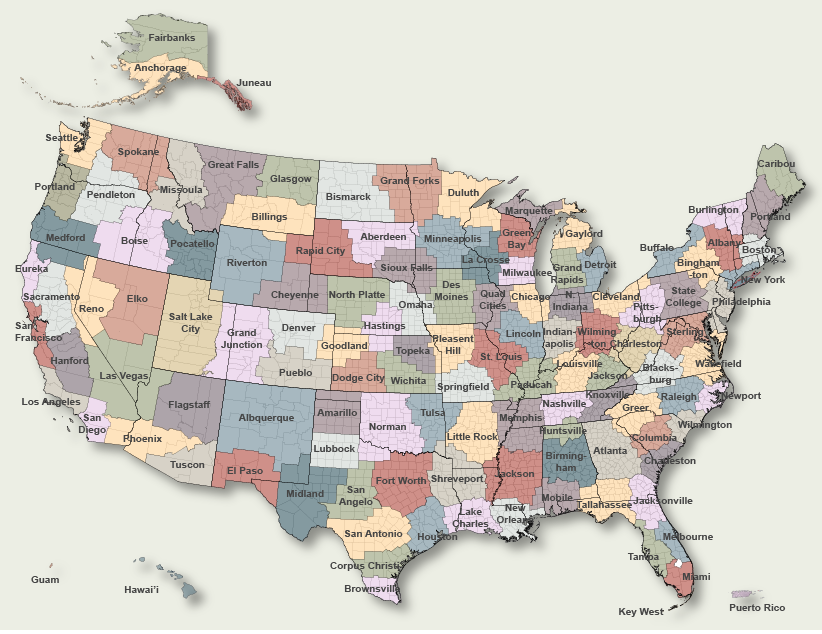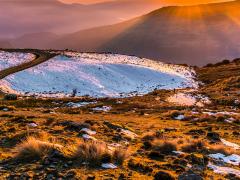Weather-Ready Nation Strategic Initiative: Making Communities Ready, Responsive, and Resilient to Extreme Events
 It is well-known within the weather forecasting community that the United States experiences the most extreme weather events in the world. Tornado outbreaks can shatter communities in the central and southeastern parts of the country. Historical flooding can flip flop with crippling drought. Blizzards can paralyze the entire Northeast. As Americans, we see it all, and the emotional and financial impacts can be staggering. Economic losses from extreme weather events are measured in the billions of dollars annually and it is tough to put a price on a life taken too quickly or a way of life completely disrupted.
It is well-known within the weather forecasting community that the United States experiences the most extreme weather events in the world. Tornado outbreaks can shatter communities in the central and southeastern parts of the country. Historical flooding can flip flop with crippling drought. Blizzards can paralyze the entire Northeast. As Americans, we see it all, and the emotional and financial impacts can be staggering. Economic losses from extreme weather events are measured in the billions of dollars annually and it is tough to put a price on a life taken too quickly or a way of life completely disrupted.
With extreme weather events seemingly commonplace on the evening news, you may not think of Americans as the most resilient of people, at least compared to others around the world. The Dutch have adapted to their high flood risk by building state-of-the-art protection systems. Russians readily survive their winters with furry hats and vodka. Bermuda took a direct hit from Hurricane Nicole in 2016 and seemed to bounce right back.
But here in America, we’ve seen countless videos of cars and trucks plowing through flooded roadways only to be swept downstream. Or, we’ve seen the opposite scenario where farmers are looking out over their dessicated crops. How many times do you watch the news reporter interview survivors who are shell-shocked at how violent nature can be? Over the past two years, four major hurricanes have made landfall in the United States. Hurricane Florence brought record-breaking rainfall across parts of the Carolinas. Most recently, historical wildfires have ravaged parts of California, reducing entire communities to rubble. A glass-half-empty view of resilience points us to more of the same for the future -- more lives lost, more lives changed forever.

Interested in becoming a Weather-Ready Nation Ambassador? Go to: www.weather.gov/wrn and click on the “Ambassador” tab.
Fortunately, the National Weather Service, and thousands of organizations across the country see that glass as also half full – working collectively to build a “Weather-Ready Nation.” The National Weather Service is leading the way by evolving its products and services so that better decisions can be made by businesses, communities, and individuals – resulting in nation that is better prepared to respond to and recover from extreme weather, water, and climate events (learn more at www.weather.gov/wrn). However, the NWS and its parent agency, the National Oceanic and Atmospheric Administration, or NOAA, recognize that government can’t succeed at this ambitious goal without fully working with America’s Weather Industry, emergency managers, and any organization that shares the goal of strengthening community resilience. As of late 2018, more than 8,600 organizations are working with NOAA and the NWS in innovative ways as “Weather-Ready Nation Ambassadors.” As the name implies, ambassadors share the goal of minimizing the loss of life and property from extreme weather. The stakes are high, and with continued population growth, expanding development into more vulnerable areas, and the uncertainties of climate change, these stakes will likely get higher. Your organization can play a valuable role, and in return, better decisions by communities, businesses, and individuals can help make this become a story about empowerment. Together we all win.

https://www.weather.gov/stormready/contact
So what exactly is the National Weather Service doing that is so new? The National Weather Service has 122 local forecast offices across all 50 states and territories. Each office is working more closely with emergency managers, government decision makers, and the media to provide impact-based decision support – or more plainly, linking weather information to expected impacts. This requires intimate knowledge of the decisions that need to be made, when they need to be made.
Another big component of building a Weather-Ready Nation is the integration of social science research into the weather forecast process. How are people going to interpret forecast information? Will the information result in the appropriate action? To answer these questions, social and behavioral scientists are working alongside meteorologists to maximize the use of and value of NWS products and services. Whether it is the information itself, or how that information is communicated, there is the potential to make big improvements in the societal outcomes of extreme weather events.
We can look to great strides made recently in Hurricane storm surge communications as a great example.
Only a few years ago, the dangers of storm surge were largely poorly communicated and confusing to those potentially affected. The National Hurricane Center, in collaboration with social scientists, created a storm surge inundation map that reduced all the disparate pieces of information, such as tides, elevation, and wave action, into one map display of “water depth above ground.” Using plain language that is intuitively displayed on the map, decision makers are now able to better visualize what conditions could be expected. This, in turn, has led to more action taking place across those coastal areas under threat from the hurricanes over the past few years.
To further amplify these messages, Weather-Ready Nation Ambassadors have profoundly made a difference. Hearing or visualizing the dangers from one source cannot compare with receiving these messages from multiple trusted sources. Behavior change is possible not only when the government warns you of something, but also other trusted sources like insurance agents, faith-based community leaders, or a person’s employer. Collectively, we are stronger when we work together. The result will be mutually beneficial to everyone.





